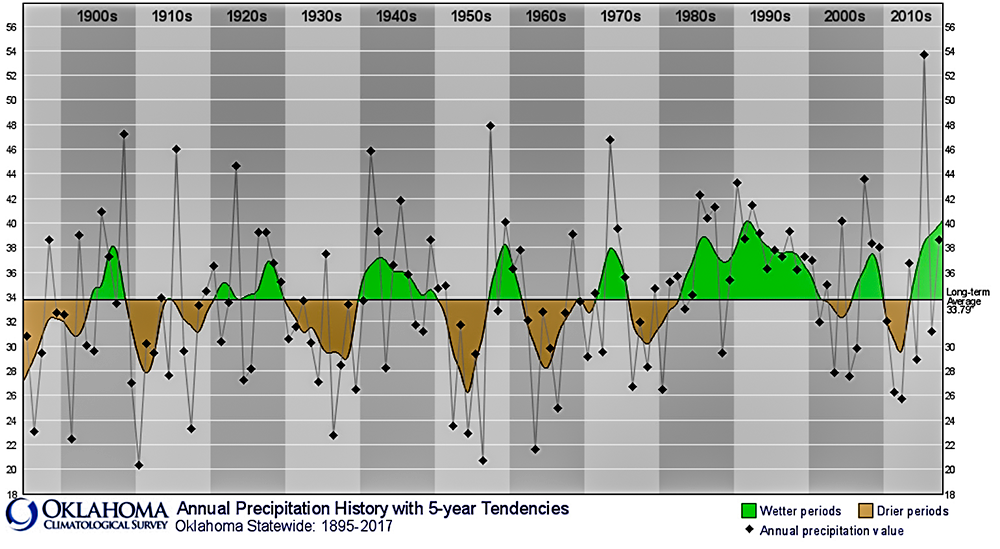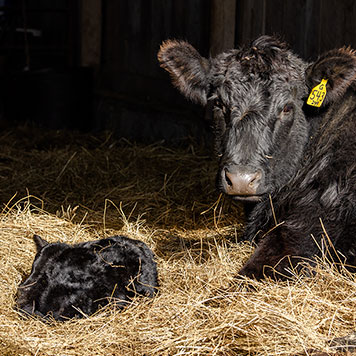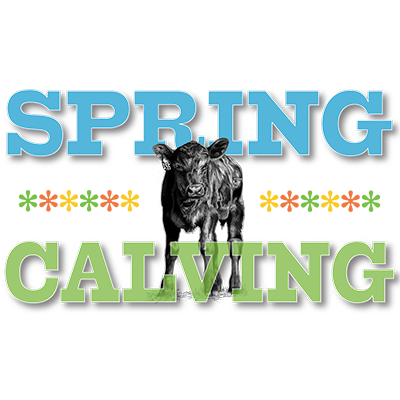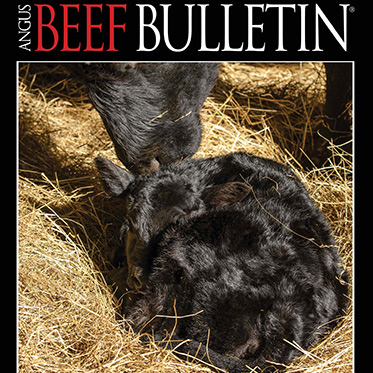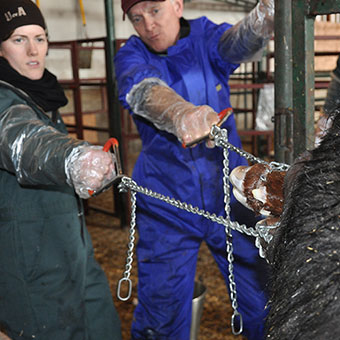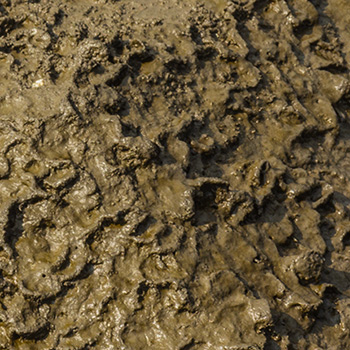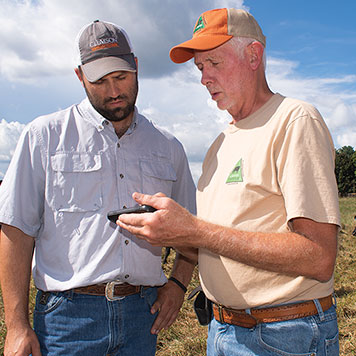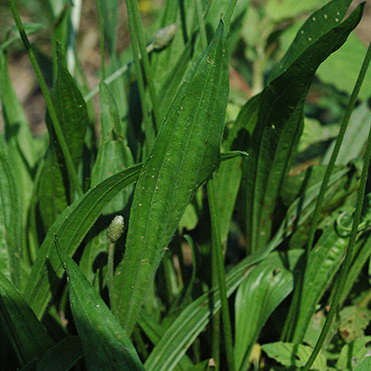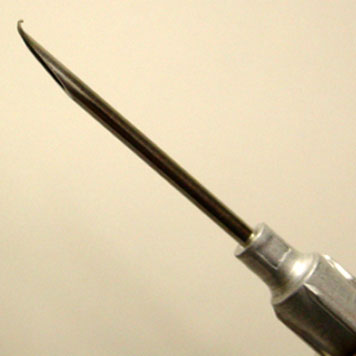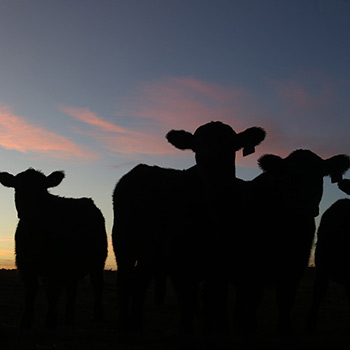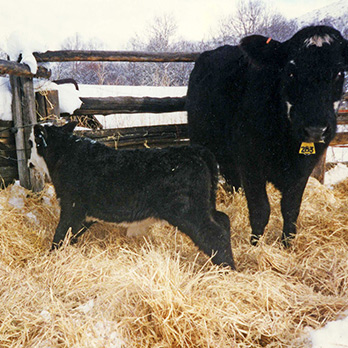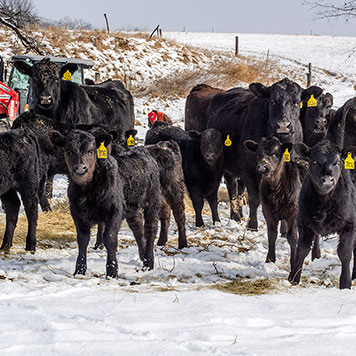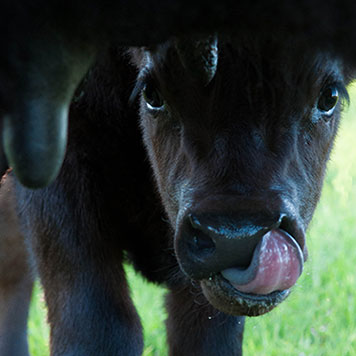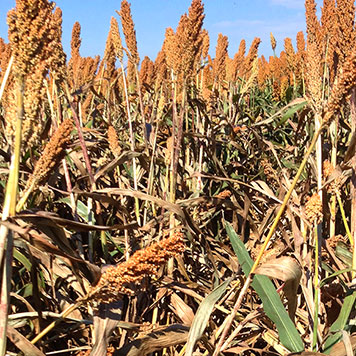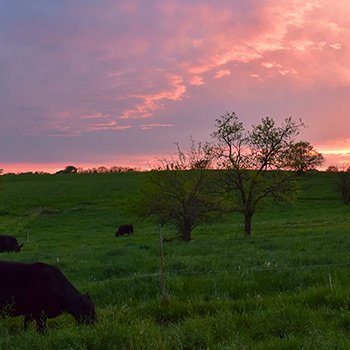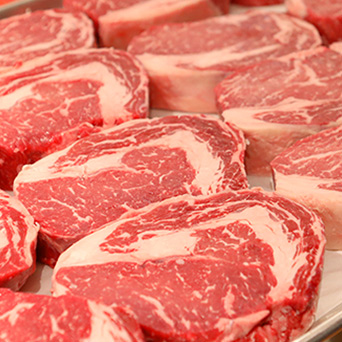Angus Advisor
Our team of Angus advisors offer regional tips for herd management for the winter season.
Southern Great Plains
david.lalman@okstate.eduThe effect of precipitation patterns from season to season has a major influence on management decisions in the cattle industry. This is especially true throughout the Southern Great Plains where a cycle of boom-or-bust grazing conditions seems to be the rule rather than the exception. Perhaps this can be attributed to the region’s two growing and grazing seasons: spring and summer forages, and winter annual crops.
For perspective, the following graph from the Oklahoma Climatological Survey shows the long-term history of summer precipitation in Oklahoma. The green- and brown-colored areas represent the five-year weighted average, measured in inches (in.), over time. The diamonds represent the measured precipitation during the respective season each year (see graph below).
After a dry winter and spring, little hay carryover was available from the previous winter. Fortunately, much of the Southern Great Plains region experienced above-average precipitation and growing conditions this past summer.
Notice the diamond to the far right of the graph is about 2 in. above the long-term average. As a result, hay supplies and standing forage resources are abundant throughout the region. High yield and abundant mid- to late-summer precipitation is generally associated with lower-quality hay due to more advanced maturity and more rain damage between cutting and baling. Therefore, be sure to have hay tested for nutritive value and adjust the supplementation program as needed.
Certified forage-testing laboratories are listed on the National Forage Testing Association’s website www.foragetesting.org.
Winter wheat pasture conditions are excellent throughout most of the region as of this writing. Small-grain winter pasture is an excellent protein and energy supplement for beef cows. About nine to 12 hours per week of access to small-grain pasture (three to four hours per day, three days per week) should meet supplemental protein and energy needs for beef cows. Fall-born calves can be given free-choice access to the small-grain winter pasture using creep gates.
A mineral supplement with elevated concentrations of calcium and magnesium should be provided to lactating cows and their calves grazing small-grain forage.
The abundant fuel load suggests that parts of the region could experience increased wildfire if or when the right conditions develop.
To protect your cattle, buildings, equipment and hay stack, see this excellent publication with many practical tips to help you minimize the risk: http://factsheets.okstate.edu/documents/e-1048-wildfire-preparing-the-ranch-and-farm.
Western Region
randyp@csufresno.eduFall-calving herds
Main focus — the breeding season.
Return inseminations. If you are using artificial insemination (AI) breeding return heats, give a GnRH injection at the time of breeding. I like to switch bulls and not breed the female back to the same AI sire I used on the first service.
Natural-service sires. Bulls are probably already turned out, or will be shortly. If females are in pastures where they are easily observed, record natural service dates and watch for return heats in cows that have been naturally covered by bulls. If a high percentage of the naturally covered females come back into estrus, replace the bull if possible.
Mineral supplementation. Mineral supplementation is important in achieving optimal reproductive performance. The breeding season is the most critical period.
Protein and energy supplementation. Both protein and energy requirements of females must be met during the breeding season. Females should be in a state of positive energy balance or gaining weight during breeding season, as this has a significant influence on fertility or conception rate.
Vaccinations. Calves should receive their first round of vaccinations. I recommend calves are at least 45-60 days old before their first round of vaccinations. This can cause a problem if you have some late clean-up-sired calves. In these situations, I like to vaccinate the AI-sired-calves about 30 days before the clean-up-sired calves. In many operations, this may not be practical.
Bull calves. Calves should be old enough by now to identify the bottom end of the bull calves. I recommend producers look at bull calves with a critical eye and a sharp knife. In most herds, I think the bottom 20% of the bull calves should be castrated and I personally believe this should be determined by phenotypic quality only.
Spring–calving herds
Main focus — the calving season.
Calving supplies. Supplies should be on hand and the proper equipment available to assist females with problems at calving. Be sure your personnel are properly trained in the most current procedures recommended for assisting females experiencing calving difficulties.
Colostrum. For maximum absorption of maternal antibodies, calves should nurse within the first six hours after birth. A supply of frozen, replacement or supplemental colostrum should be kept on hand. Extra milk from a mature cow taken shortly after calving is the best source of frozen colostrum.
Retained placentas. Watch for retained placentas and treat those cows promptly. If they have not cleaned by 24 hours, we administer a prostaglandin injection.
If they don’t clean in response to that injection, then we administer another prostaglandin injection combined with an antibiotic treatment given intramuscular or mixed with sterile water and infused directly into the uterus.
Body condition score. The ideal body condition score (BCS) at calving is a 5.0 (scale = 1 to 9) for mature cows and 6.0 for 2-year-old heifers. Both protein and energy requirements need to be met to achieve the desired level of body condition.
Bull and heifer development. Hopefully, both bulls and heifers are performing at levels allowing achievement of desired average yearling weights. Our target levels of performance here at the university when developing bulls and heifers from weaning to yearling are 3.0 to 3.5 pounds (lb.) per day for bulls and 1.0 to 1.5 lb. per day for heifers.
Treatment protocols. Have treatment protocols and products on hand for both scours and pneumonia in suckling calves.
Midwest Region
baileyeric@missouri.eduStockpiling tall fescue is a widely promoted forage-management practice in this region.
Most experts consider the cost of stockpiled forage to be one-third to one-half as much as feeding hay, and many have documented outstanding forage quality in stockpiled pastures.
Producers across Missouri have received substantial rainfall during the fall growth period and have ample stockpiled fescue available. Here are a few tips to help use stockpiled fescue efficiently.
Forage intake by cattle decreases when forage height is below 4 in. Do not let cattle graze stockpiled pastures to the ground, because they will not have enough nutrients (energy and protein) to remain productive. Rotate cattle to another pasture or begin feeding hay when pasture forage becomes limited. If the grazing is “patchy,” just take an average of the entire area.
A second concern relates to grazing tall fescue that is considered toxic to cattle (the ergot alkaloids produced by the endophyte).
Recent University of Missouri research reported that ergot alkaloids concentrate in the crown of fescue plants during fall growth. Allowing cattle to graze that low could be setting up problems with fescue foot during the winter.
Quality of stockpile fescue is outstanding and when forage intake is not limiting, beef cow nutrient requirements will be met (even lactating cows).
No additional hay or other macronutrient supplement (energy and protein) will be needed. However, it is a good idea to keep minerals and vitamins available.
The University of Arkansas conducted on-farm surveys from 2002-2006 and showed that the total digestible nutrients (TDN), energy, of stockpiled fescue was adequate to support a lactating cow from October through February. Protein was never a limiting factor in this.
Anyone who has not taken advantage of stockpiled forages as part of a winter feeding program is missing high-quality, low-cost feed.
Do not let intake become a limiting factor, as that will result in lost cow condition. Also, if pastures contain “toxic” tall fescue, be aware that grazing them short may increase the risk of fescue foot.
Overall, I cannot overemphasize how important making the cow do the work of harvesting forage is to the bottom line of beef cattle operations. Just don’t try to starve a profit out of cows by overgrazing winter pastures.
